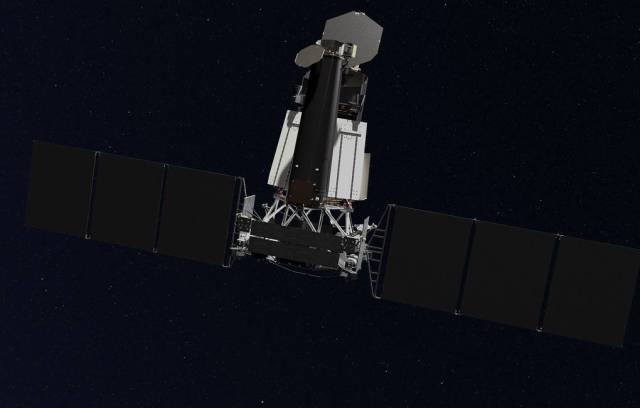According to the scientific director of the project Rashid Syunyaev, the German eROSITA telescope is in safe mode
MOSCOW, March 6. /tass/. The Russian Pavlinsky ART-XC telescope at the Spektr-RG Space Observatory (SRG) can observe X-ray sources of interest to scientists or scan certain areas of the sky while the German eROSITA telescope is turned off. This was reported to TASS by the scientific director of the Spektr-RG project Rashid Syunyaev.
"Russian scientists are discussing the program of further work of the SRG Observatory in a situation when the ART-XC becomes its main tool. It is important to choose targets, observing which the Russian telescope can get very good science. Now there is an opportunity to do with the help of ART-XC what is especially interesting for the team of scientists working with its data, without coordinating every step with the eROSITA team," said Syunyaev.
According to the scientist, now the German eROSITA telescope is in safe mode ("safe mode"). "It is important that this is not a complete shutdown. If it was completely turned off, it would be much more difficult to revive it later," said Syunyaev.
The scientific director of the mission stressed that the German side did not specify the time frame in which it would restore work. Spectrum-RG was promised at least six years of active life. It's already been 2.5 years, even a little more. I very much hope that the situation will improve and the eROSITA telescope will start working again before the end of the period of operation of the observatory promised to us by the S. A. Lavochkin NGO," he said.
Over the past two and a half years, Spektr-RG has carried out four full scans of the sky out of eight planned, more than a third of the sky was examined during the fifth scan. "During this time, eROSITA has discovered more than 2 million quasars and nuclei of active galaxies in the sky (and these are supermassive black holes, which accretion (falling matter) is going on), many hundreds of thousands of stars with hot corona, much brighter than our Sun, tens of thousands of galaxy clusters, the mass of which 80% consists of mysterious "dark" matter," - added Sunyaev, specifying that comparing the data of different sky surveys allows you to monitor the variability in time of many thousands of celestial objects in X-rays and learn a lot about their nature.
"This is a huge amount of unique data, half of which is in our data archive and is now being processed by Russian scientists. The complete processing and interpretation of these unique data will take more than one year," said Syunyaev.
About Spectrum-RG
Last week, the head of Roscosmos, Dmitry Rogozin, said on the YouTube channel "Solovyov Live" that the German side had notified that it would turn off its telescope at the Spektr-RG space observatory, which is a joint project in the Russian Federation, because of the situation in Ukraine. Later, the press service of Roscosmos noted that the sanctions imposed by the German side lead to real losses of the state corporation, which it will evaluate and put up for payment to partners.
The Spektr-RG spacecraft was developed at the S. A. Lavochkin NPO (part of Roscosmos). It was created with the participation of Germany within the framework of the Federal Space Program of Russia by order of the Russian Academy of Sciences. It has two X-ray telescopes on board: the Russian ART-XC named after M. N. Pavlinsky and the German eROSITA. At the end of October 2019, it successfully reached the working orbit located at the L2 point.
The work of the observatory is managed by the NGO im. Lavochkina. The data from the telescopes are received at the deep space communication centers in Medvezhye Lakes, Ussuriysk, and Baikonur. Their processing is also carried out by graduate students and young scientists.

